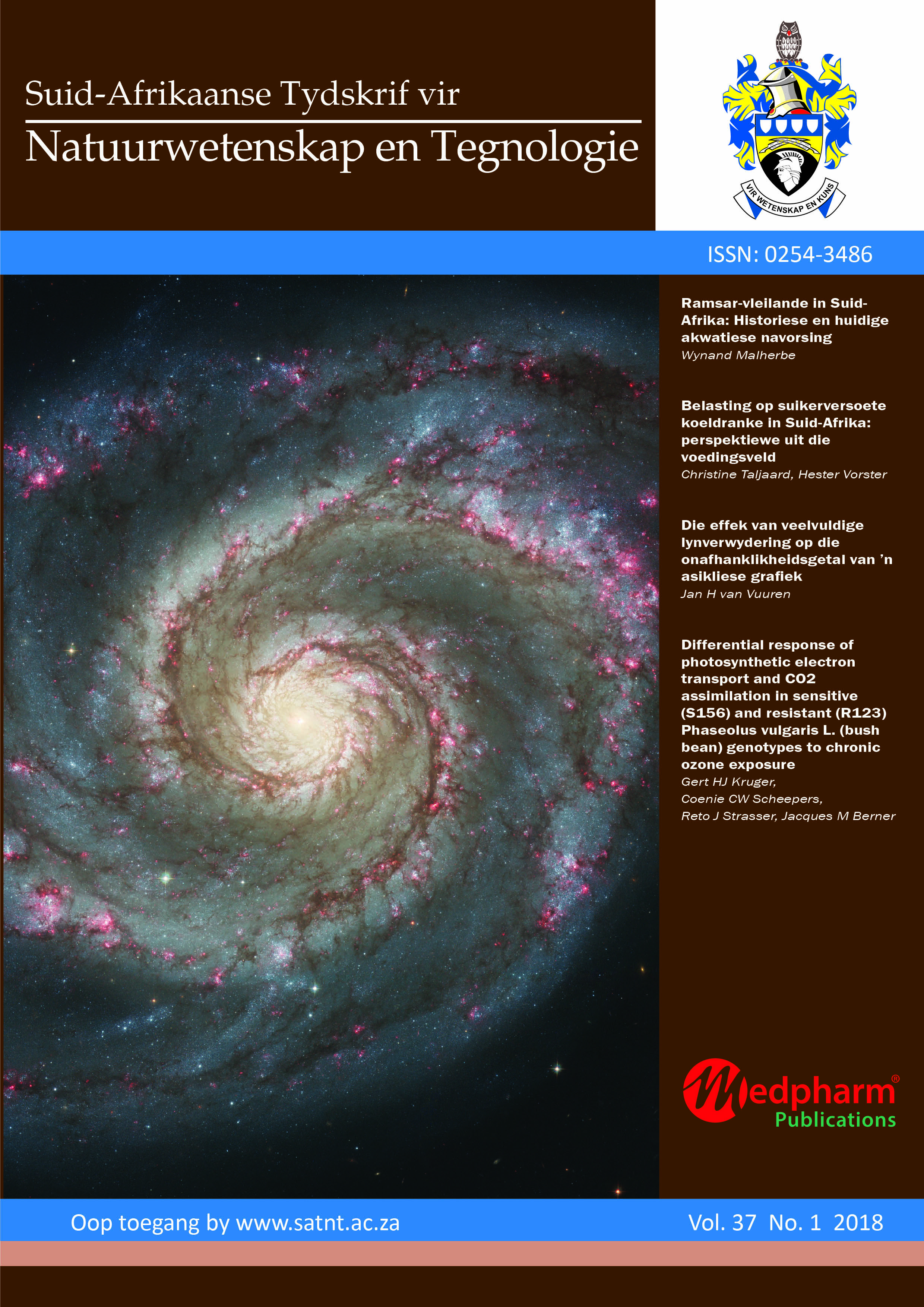Topically applied <em>Terminalia sericea</em> (Combretaceae) leaf extract and terminoic acid on infected wounds lead to better wound healing outcomes than gentamicin in an animal model
Abstract
Plants are well-known sources of compounds with biological activity and thus have been used by mankind for centuries as medicines. Terminalia sericea occurs widely in southern Africa in sandy soils. It has been used traditionally to treat abscesses and wounds.
This study investigated the antibacterial properties and wound healing activity of an acetone leaf extract of Terminalia sericea and terminoic acid, an isolated compound. The backs of 10 Wistar rats were shaved and incisions made in four different areas to which the two treatments, a positive control (gentamicin) and no treatment, were applied 48 hours after the wounds were superficially infected with Staphyloccocus aureus. The wounds were monitored for exudate formation, erythema and size, daily for five days. The leaf extract and terminoic acid treatment had positive effects on the exudate production and erythema, superior to gentamicin treatment and the negative control over the treatment period. All treatments had an effect on the size of the wounds after five days. The effects of the treatment may be attributed to the modulation of wound healing by pathways other than, or in addition to, antibacterial action of phytochemical constituents. This study shows that the extracts have the potential for pharmaceutical development into topical formulations for possible use in wound treatment.


